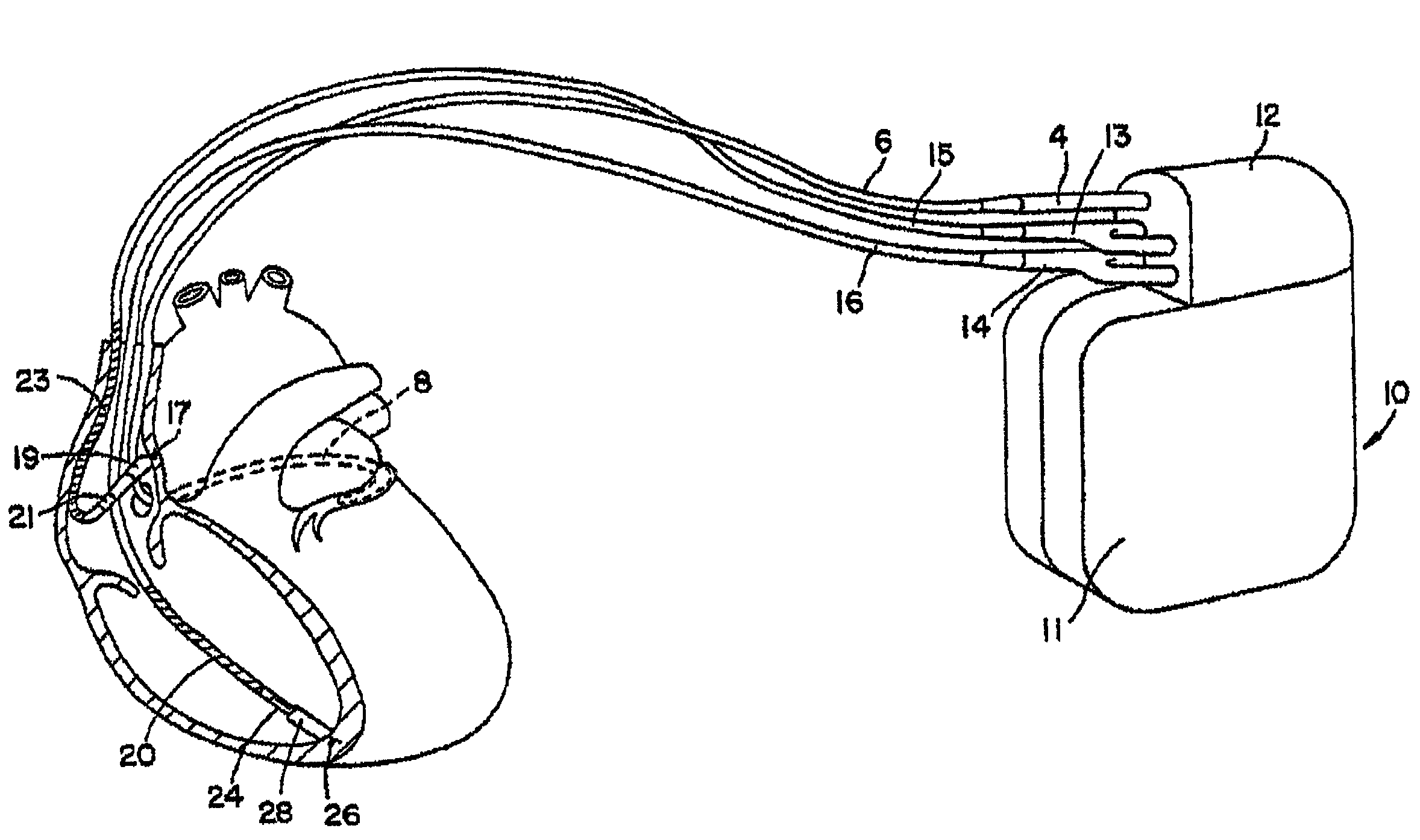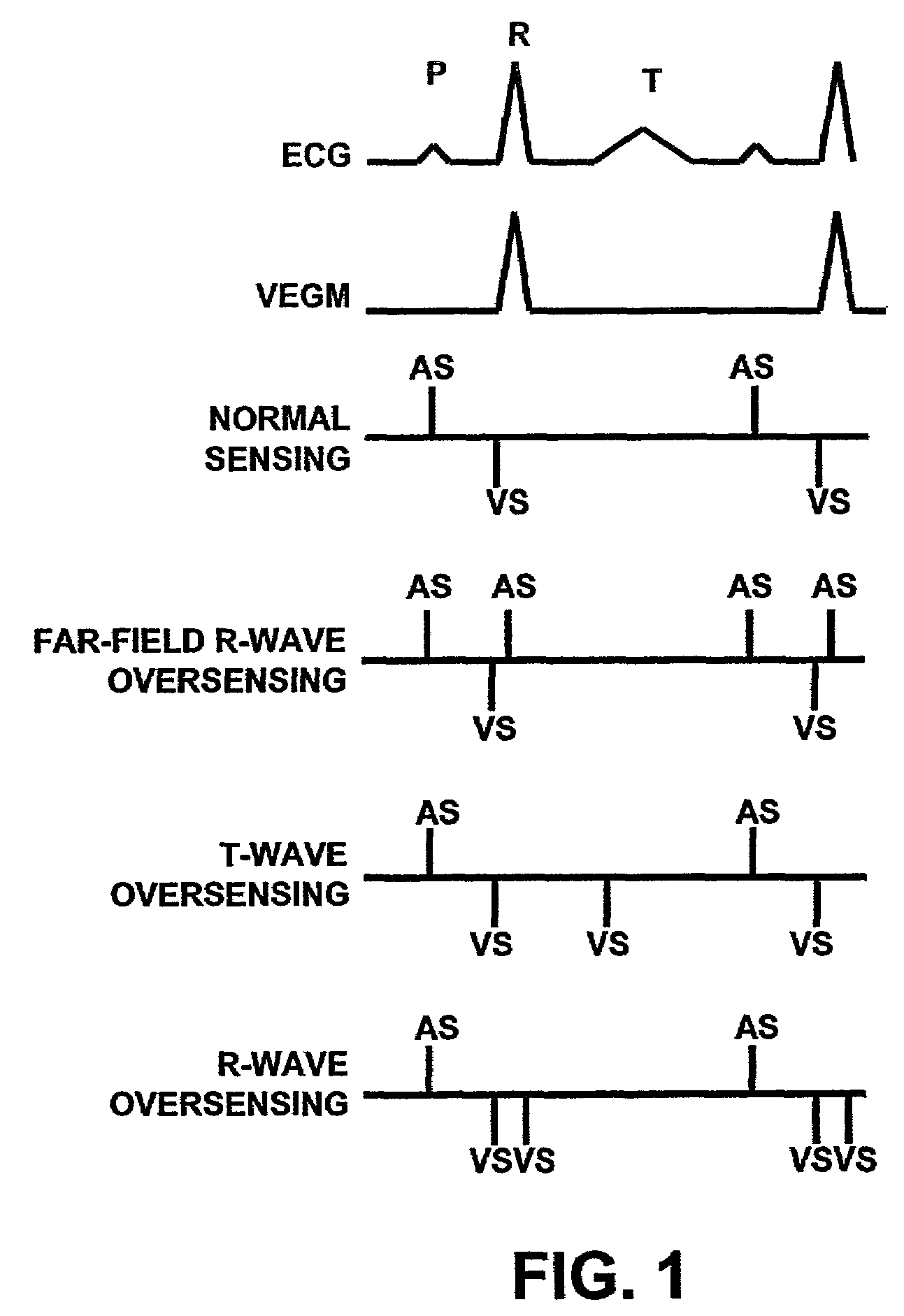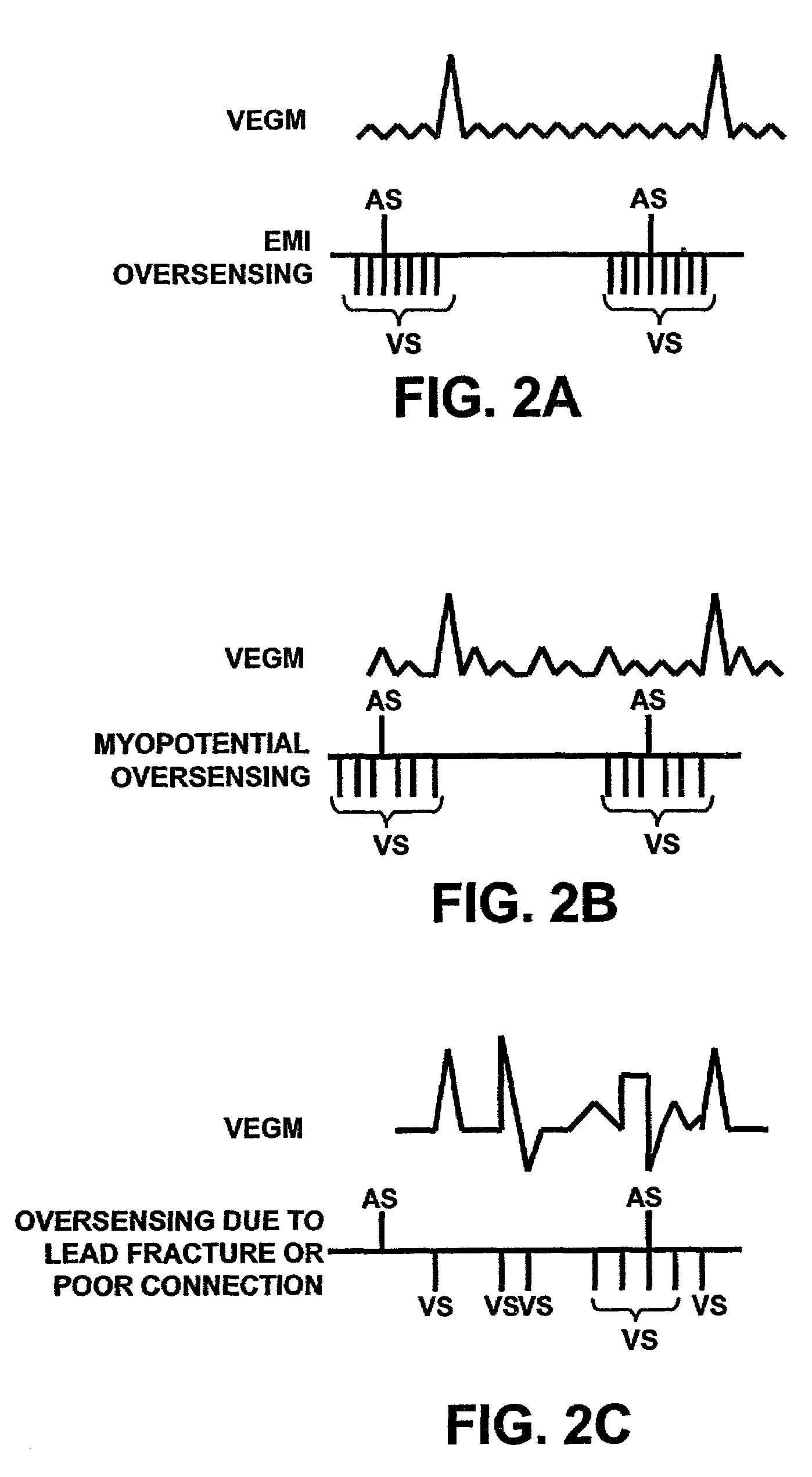Method and apparatus for identifying cardiac and non-cardiac oversensing using intracardiac electrograms
- Summary
- Abstract
- Description
- Claims
- Application Information
AI Technical Summary
Benefits of technology
Problems solved by technology
Method used
Image
Examples
Embodiment Construction
[0031]The present invention is aimed at providing a system and method for automatically identifying and trouble-shooting cardiac and / or non-cardiac oversensing by an implantable cardiac stimulation device. The methods included in the present invention may be used in conjunction with, or incorporated in, an implantable cardiac stimulation device such as a pacemaker or an ICD, or other monitoring devices, capable of storing sensed intracardiac electrogram (EGM) data.
[0032]An exemplary ICD 10 is shown in FIG. 3, with which methods included in the present invention may be used. The ICD 10 is shown coupled to a patient's heart by way of three leads 6, 15, and 16. A connector block 12 receives the proximal end of a right ventricular lead 16, a right atrial lead 15 and a coronary sinus lead 6, used for positioning electrodes for sensing and stimulation in three or four heart chambers. In FIG. 3, the right ventricular lead 16 is positioned such that its distal end is in the right ventricle ...
PUM
 Login to View More
Login to View More Abstract
Description
Claims
Application Information
 Login to View More
Login to View More - R&D
- Intellectual Property
- Life Sciences
- Materials
- Tech Scout
- Unparalleled Data Quality
- Higher Quality Content
- 60% Fewer Hallucinations
Browse by: Latest US Patents, China's latest patents, Technical Efficacy Thesaurus, Application Domain, Technology Topic, Popular Technical Reports.
© 2025 PatSnap. All rights reserved.Legal|Privacy policy|Modern Slavery Act Transparency Statement|Sitemap|About US| Contact US: help@patsnap.com



